Most trees lose their leaves, wither, or die during various specific seasons; this can be due to harsh climatic conditions or the trees’ inability to endure unexpected changes in weather patterns. However, that’s not the case with hardy evergreen trees that thrive and retain their foliage all year round regardless of the climatic factors. Below, we share a list of some of the most common of these trees.
The top 11 hardy evergreen trees are:
- Yew Tree
- Juniper
- Douglas Fir
- Deodar Cedar
- Leyland Cypress
- Green Giant Arborvitae
- Fraser Fir
- Eastern White Pine
- Norway Spruce
- Scots Pine
- Pinyon Pine
Having listed the trees, let’s now get a better understanding of each one of them.
1. Yew Tree
The yew tree is one of the British-decent trees that grow under the covering of other trees. It’s an evergreen tree with needle-like leaves that are light green below and dark green above. When touched, the leaves tend to be waxy. In addition, the tree’s crown is always broad because of being multi-stemmed.
Yew trees can live up to an estimated 2,000 to 5000 years. The trees have spread across the British Isles, especially on the Glens of Scotland and sides of Crags in Snowdonia. They grow under the latitude of 63N To 30N.
Alongside these features, yew trees grow slowly under a shade. They can survive beneath a forest canopy, all thanks to living beneath angiosperm trees that enable the yews to grow during spring and autumn conditions.
Furthermore, yews withstand harsh environmental conditions, making them survive beneath conifer trees. One unique feature of this tree species is that its wood is hard and elastic due to its long, water-conducting cells called tracheid.
Yew trees, especially the Japanese yew, are also perfect for horticultural purposes, being used more frequently than any other type of conifers.
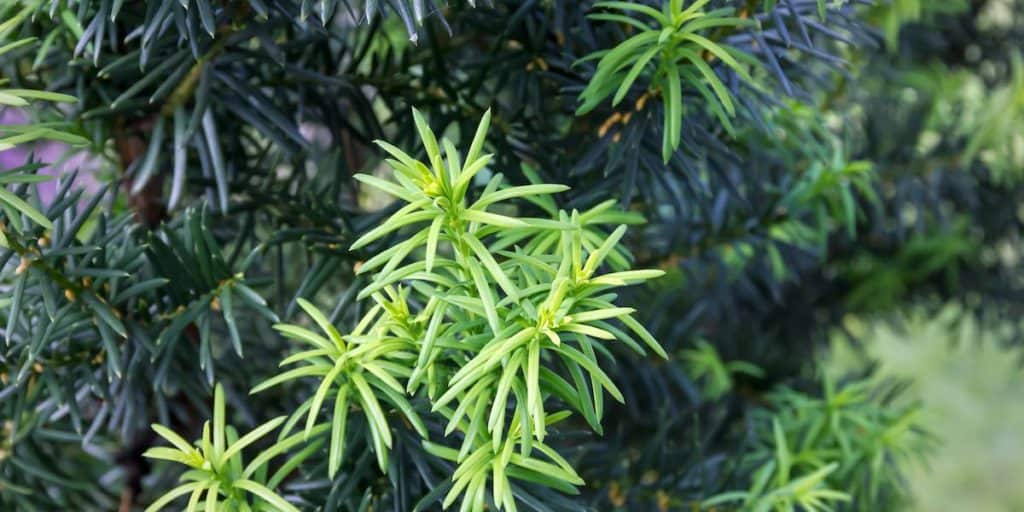
2. Juniper
Junipers are small evergreen trees that are part of the cypress family. An estimate of 30 juniper species exists.
These trees grow In the Northern Hemisphere and have widely spread in Northern Europe, Asia, and Japan. In the United States, you can find the tree in the hilly regions of the Appalachians and the western states of Utah.
Junipers are tubular or conical in shape. Their trunks are short, and their bark has a reddish-brown color that cracks easily. The leaves are gray-green and resemble tiny needles. These evergreen trees are dioecious such that individual plants produce male or female flowers.
The juniper tree is a hardy and woody plant. It can cope with acidic and alkanoic soils and thrives well in alluvial sites.
Junipers are ideal for flavoring liquors and sauces. Their berries provide many health benefits. Also, their aromatic wood is perfect for making fence posts, paneling, and pencils.
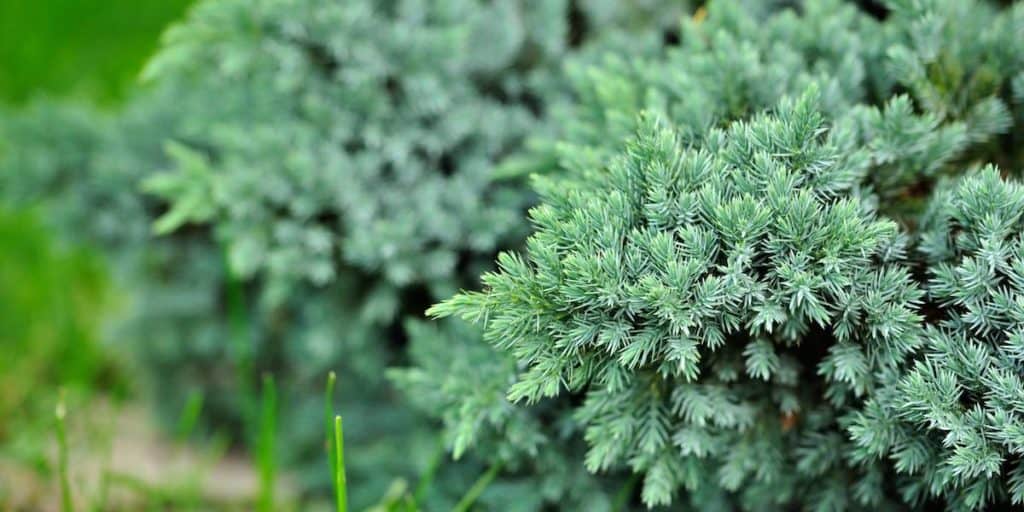
3. Douglas Fir
Douglas firs are conifer species of trees belonging to the pine family (Pinaceae). You can also refer to the trees as Oregon pines, Douglas spruce, or Columbian pines.
These evergreen tree species have their origins in Western North America and Eastern Asia. They come in three varieties:
- Coastal Douglas-fir
- Rocky Mountain Douglas-fir
- Mexican Douglas fir
The trees vary in size, ranging from medium to extremely large; 20-100 meters (65.61-328.08 feet). They often contain spirally arranged needles, growing directly from the branch and surrounding the entire tree. Douglas fir leaves are flat and soft with linear thorns about 2-4 centimeters (0.78-1.57 inches) long.
Generally, the tree leaves occur singly instead of in fascicles and encircle the branches completely. As the Douglas fir trees grow tall in denser forests, they shed their lower branching. As a result, the foliage starts a bit higher from the ground. But those trees in environments with more lights have theirs closer to the ground.
The bark on younger trees is smooth, thin, and gray, with many resin blisters. A mature Douglas fir tree tends to be corky and thick, growing up to 14 inches (35.56 cm) wide. The bark contains dark brown layers interspersed with lighter colored layers of corky material. Perhaps this thickness makes the Douglas fir tree the most fire-resistant tree.
Currently, the hardy evergreen tree is super-spread in the coastal regions like west-central British Columbia and central California. You can also find some species of the tree in Washington and Oregon.
The tree grows well in neutral or acidic soils and is a primary food source for little mammals like shrews, moles, and chipmunks. A mature Douglas fir forest makes a home for red tree vole.
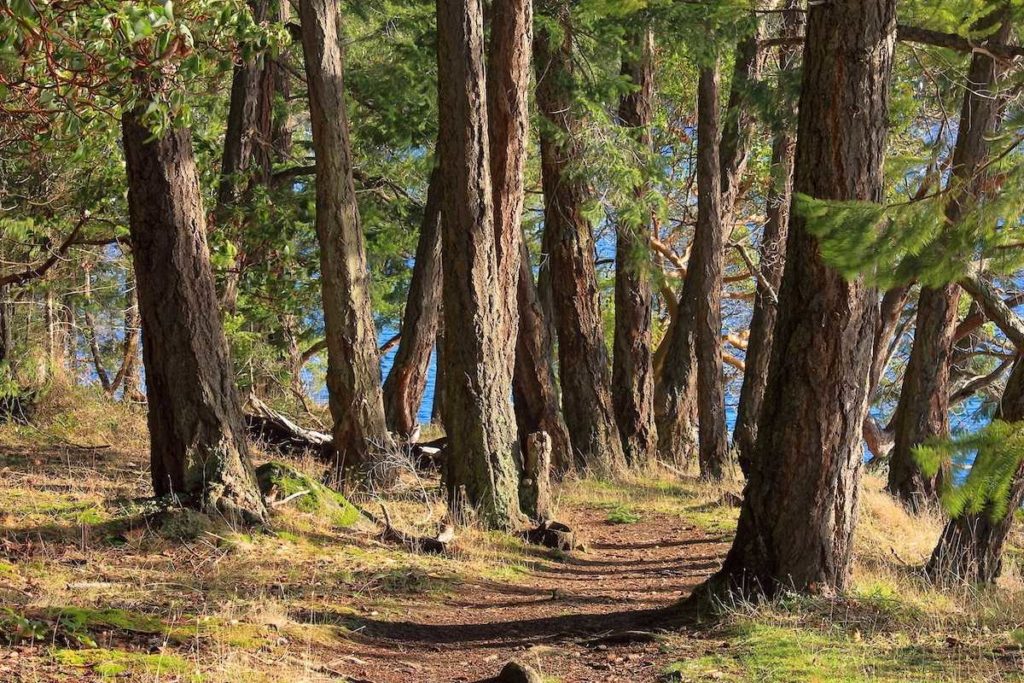
4. Deodar Cedar
Its scientific name is Cedrus deodar. Deodar cedar is a large evergreen coniferous species, reaching a height of 40-50 m (131.23-164.04 ft). The cedar species grows at altitudes of 1,500-3,200 m (4,921.26-10,498.69 ft). Its leaves are needle-like, about 2.5-5 cm (0.98-1.96 inches) long.
The deodar cedar tree is known for its weeping habits (gracefully drops branches). In most cases, researchers use the tree as a specimen in parks and other enormous gardens. The tree further does a great job of lining the streets.
Deodar tree seeds thrive well in slightly acidic, well-drained soil. Their growing pace is moderate and requires more space for their beautiful weeping branches. When planting the tree, you need to avoid those areas getting a lot of wind.
These tree species originate from Eastern Afghanistan, Western Nepal, North-Central India, and Northern Pakistan. The deodar cedar tree is culturally significant among the Hindu community because they worship it as a divine tree.
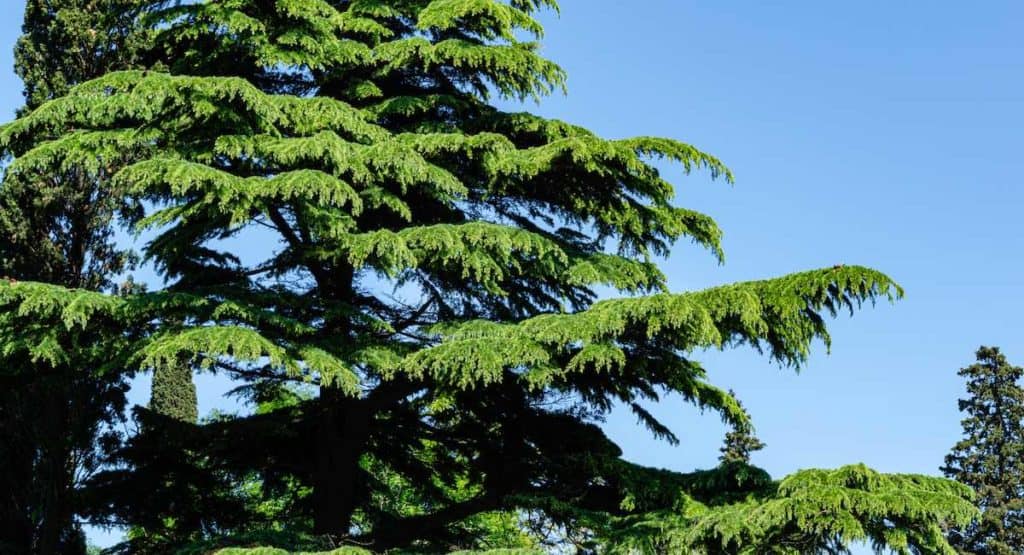
5. Leyland Cypress
Leyland cypress trees are exceptional in their growth rate. These low-maintenance evergreens grow very fast and maintain their bluish-green color and needle-like leaves all year round. The trees tolerate a range of sunlight and a variety of soil types.
Although the tree is not picky regarding soil type and sunlight, the soils need to be well-drained. They can be alkaline, sandy, loamy, clay, or others. You can also fertilize your trees before they grow, but not every year.
Regarding appearance, Leyland cypress trees create a pyramidal, conical shape with bluish-green, needled leaves. The plants grow to a remarkable height of 40-60 feet (12.19-18.28 meter) if you do not prune them and spread to about 15-20 feet (4.57-6.09 meter).
The Leyland plant is known for being America’s most planted privacy tree. If you are looking for a way to block unwanted noise, shield your home from busy streets, or get privacy from neighbors, the Leyland cypress is what you need.
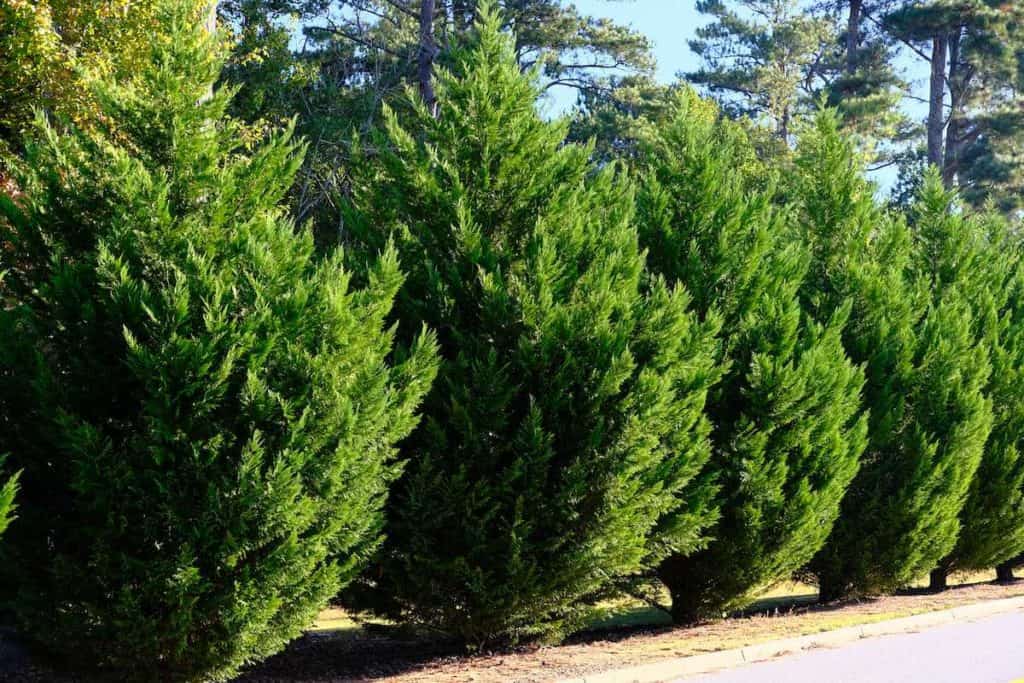
6. Green Giant Arborvitae
This fast-growing evergreen consists of six coniferous species native to North America and Eastern Asia. Also referred to as Thuja green giants, they are a cross hybrid between the Japanese arborvitae and the Western Redcedar.
The tree grows in various soils but grows best in moist, well-drained loamy soils. Planting it in a wetland with poor drainage and exposure to salts and sprays may ruin its growth.
When growing, the tree goes up by as much as 3 feet (0.91 meter) annually until maturity. It creates a natural pyramidal conical shape with dense and rich green foliage. During winter, the leaves bronze slightly or darken. The maturity size of the tree is about 50-60 inches (19.68-23.62 cm) in height and spreads to about 12-20 inches (30.48-50.8 cm).
Green giant arborvitae trees are exceptional landscape trees, ideal for hedging, screening, or being used as a single specimen. Once established, the tree becomes resistant to wind and withstands heavy snow or ice. That makes green giant arborvitae an ideal choice for a natural windbreak.
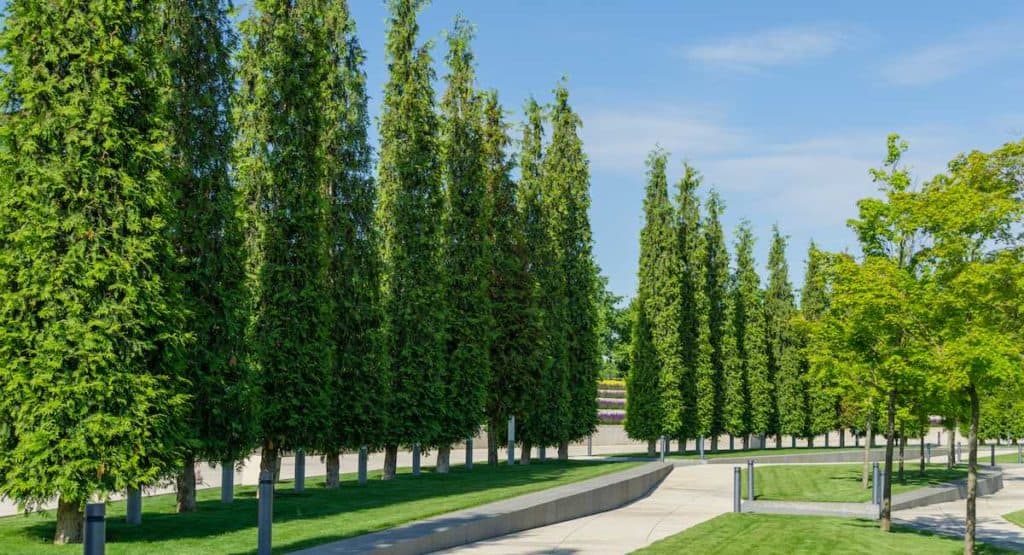
7. Fraser Fir
These evergreen trees hail from the Southeastern parts of the Appalachian Mountains, United States. Fraser Fir trees are grown as Christmas trees because of their symmetrical shape and fresh fragrance.
These trees tend to retain the needle softness even after being cut. That way, they don’t prick you when hanging ornaments. Besides, the needles last for a while before falling.
You can grow the Fraser fir anywhere worldwide and not necessarily in the Appalachians. Even so, the plant thrives well in moist areas with well-drained land. But you can still grow it in any other soil, so long as you establish an irrigation system for the plants to help you during the dry season.
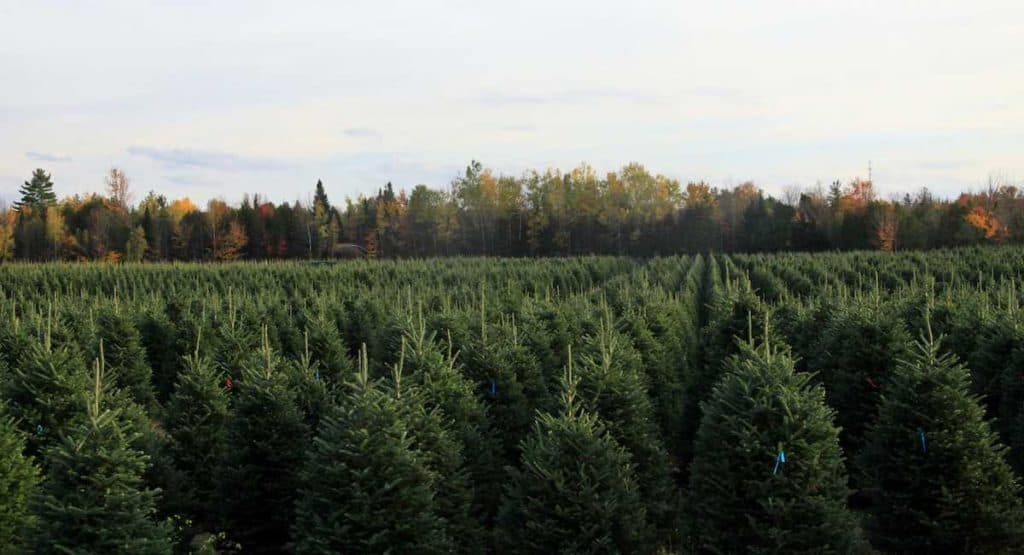
8. Eastern White Pine
This tree is also called Pinus Strobus. Eastern white pine trees grow in Northern America, Canada West, Southern Manitoba, and Minnesota. Even so, these trees flourish well in Eastern North America under properly drained or sandy soils and moist climates.
Besides, this tree type thrives well in muddy areas and stony highlands and withstands harsh environmental conditions.
In addition to that, the Eastern white pine trees also survive in mixed forests. The tree is a source of food and shelter for many forest birds, like the red crossbill, and small mammals like squirrels.
Eastern Pine trees have their origin in some parts of North-central and Northeastern America. However, only 1% of the old forest remains after vast burning incidents from the 18th century to the early 20th century.
The tree leaves are broad and coniferous, occurring in bundles of five. This tree happens to be the tallest in Eastern North America. You can use the Eastern white pine to make timber frames since the tree can grow into a wider size.
The tree’s needles also make a pleasant cup of herbal tea. Additionally, when its tar is removed slowly by burning the pine roots and branches in a partly smothered flame, it can then be added to beer and used to do away with roundworms and tapeworms.
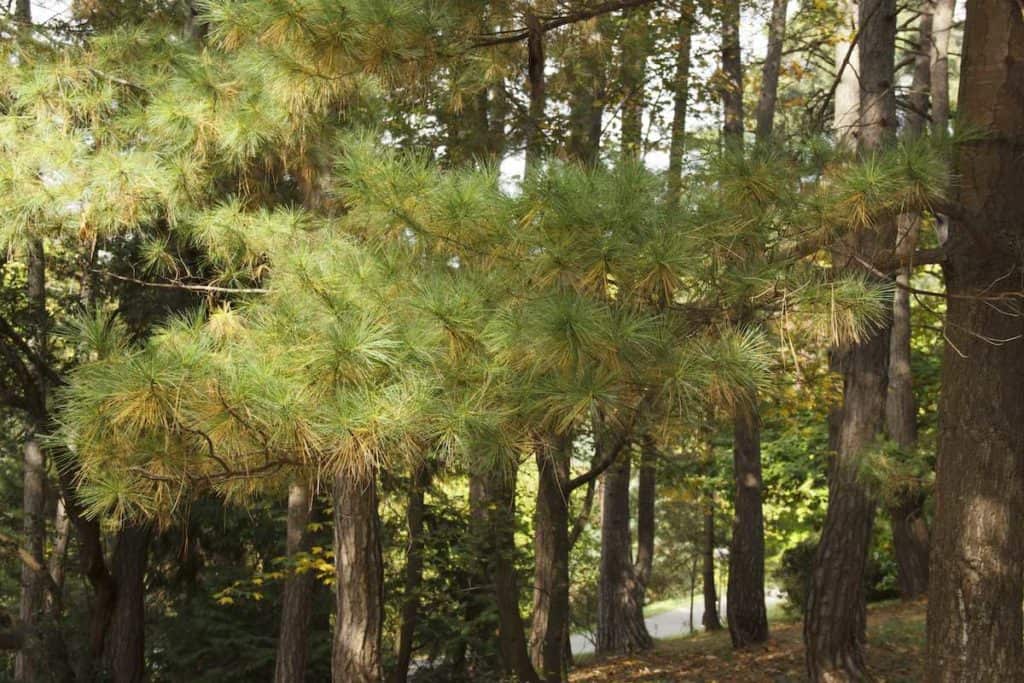
9. Norway Spruce
The Norway spruce tree originates from Europe. It has a robust root system that lets it withstand heavy winds. The evergreen is a fast-growing tree, increasing its height by 2 feet (0.6 meter) every year, and can grow up to 100 feet (30.48 meter). Norway spruce is a big tree and therefore needs enough space to grow.
The tree leaves are needle-like and edgeless with orange-brown shoots. Norway spruce trees can grow under a latitude of 70N and serve as ornamental trees in parks and gardens. You can also use it as a Christmas tree.
Besides, Norway spruce can produce softwood timber and paper. The tree is also used to produce spruce beer, an ideal option to prevent and cure scurvy. Additionally, Norway spruce roots traditionally make syrup or tea that treat respiratory tract, skin, and gastrointestinal tract infections.
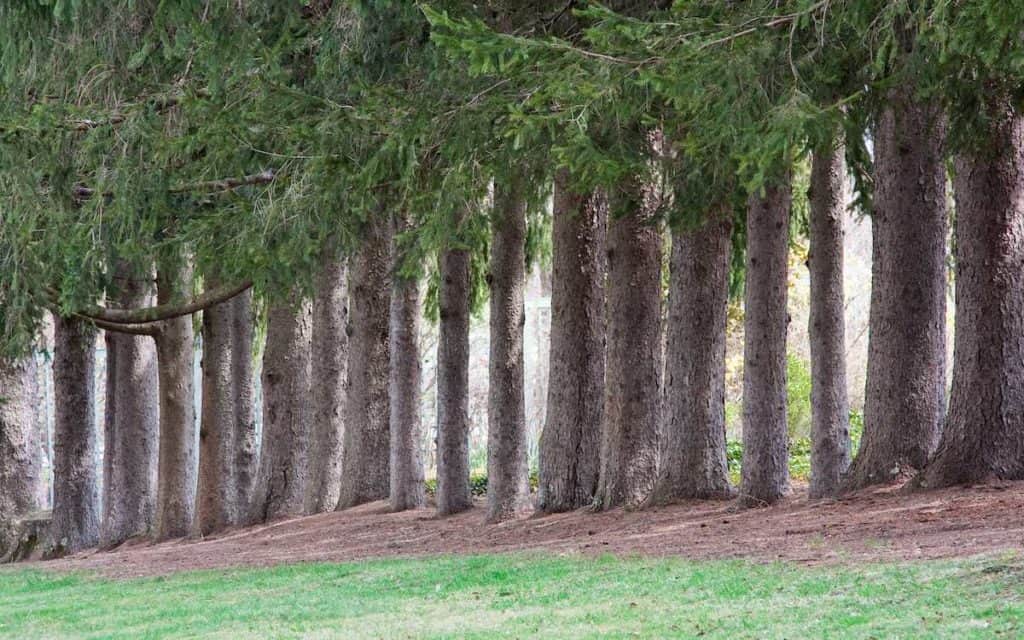
10. Scots Pine
The Scots pine is also known as Pinus sylvestris. Scots pine refers to tree species belonging to the pine family. These trees originate from Eurasia, specifically Western Europe, Eastern Siberia, Anatolia, and the Caucasus mountains.
Scots pines grow up to 35 m (114.82 feet) high and create a 1-meter (3.28 feet) trunk when mature. The lower part of the tree bark is often scaly and dark gray-brown, while the upper section and the branches are flaky, thin, and orange.
The leaves of the Scots pine tree are short and blue-green. On the other hand, its shoots are light brown and arranged in spiral and scale-like patterns. Mostly, you will find Scots pine trees in sandy soils, peat bogs, rocky outcrops, or near forests. The tree’s lifespan is usually 150 to 300 years, with its oldest recorded specimens being over 760 years in Lapland, Northern Finland.
Currently, there are over 100 Scots pine varieties described in botanical literature. However, only three to four are widely adopted. Those Scots pine species survive and grow in harsh and unfavorable conditions, making them incredibly hardy.
You can use Scots pine wood to pulp timber products during construction. The wood is often pale brown. Other countries use the tree to make tar and produce Rosh and turpentine.
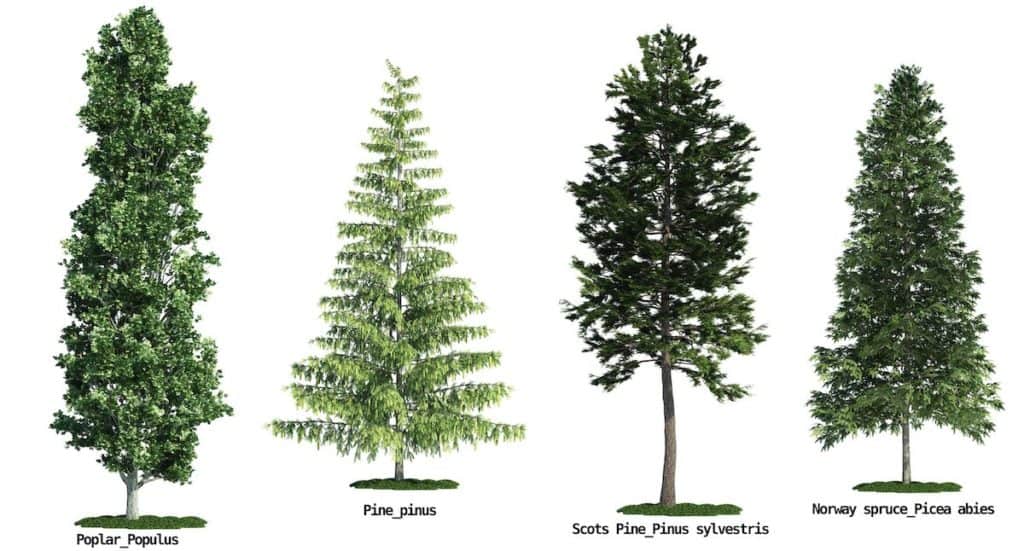
11. Pinyon Pine
Pinyon pine is a hardy evergreen plant that grows in the southwestern part of North America. New Mexico is one of the places that cultivates these tree types. Although the tree grows slowly and steadily, it produces good nuts, which are the staple food of the residing Americans.
During transplant and cultivation, pinyon pine requires regular irrigation. However, when the tree grows and establishes itself, you can reduce the amount of water.
Pinyon pine fruits also serve as snacks and ingredients in New Mexican cuisines. The tree becomes dense and rounded in shape as it reaches its maturity.
When you burn the pinyon pine wood, it yields a distinctive fragrance making it burnt in Chimeneas. They also increase the concentration of micronutrients and macronutrients in places where they are grown.
The pinyon pine seeds are a highly valued food for American Indians living in the mountains of the North American southwest.


